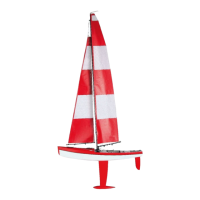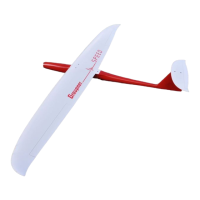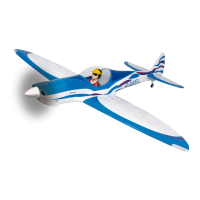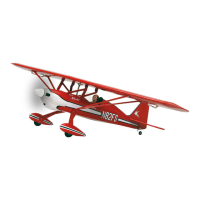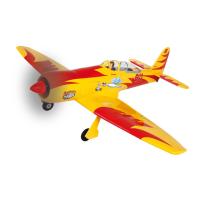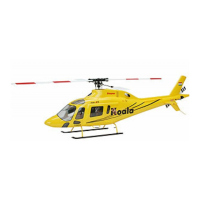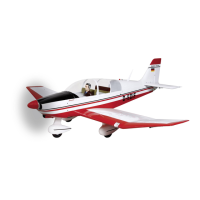GRAUPNER GmbH & Co. KG D-73230 KIRCHHEIM/TECK GERMANY
Änderungen vorbehalten! Keine Haftung für Druckfehler Ident. # 0059200 10.2008
28
Always switch on the transmitter first, then the receiving system. When
switching off, reverse the order: receiving system first, then the transmitter.
Check that the control surfaces work in the correct “sense”, i.e. they deflect in
the direction which corresponds to the movement of the stick.
After each session remove all the batteries from the model and store them in a
discharged state (approx. 0.9 V per cell) at a temperature of about +5° to +25°
C. They must be kept out of the reach of children.
Please don’t misunderstand the purpose of these notes. We only want to make
you aware of the many dangers and hazards which can arise if you lack
knowledge and experience, or work carelessly or irresponsibly. Provided that
you take reasonable care, model flying is a highly creative, instructive,
enjoyable and relaxing pastime.
Notes on the use of NiMH batteries
Application
All Graupner NiMH battery packs and single cells are designed exclusively for typical
modelling applications in model aircraft, boats and cars.
Charging
1. NiMH batteries must always be charged using a suitable standard charger or fast
charger. For more information see the main Graupner FS catalogue.
2. Before charging an NiMH pack, allow it to cool down to ambient temperature, i.e.
approx. 20º C. The battery should not be charged until just before use, as all
NiMH cells have a natural tendency to self-discharge due to their construction.
3. Warning:
The charge process must be supervised even if you are using a fully automatic
charger. Note the maximum permissible charge current printed on the pack or
individual cells, and do not exceed that value. Excessive charge currents can
cause NiMH cells to overheat. If the battery heats up to about 50° C when on
charge, the charge current must be switched off immediately. When NiMH cells
get hot, the pressure inside the cell case rises greatly. Every NiMH cell in a pack
is fitted with a pressure valve which is designed to prevent it exploding
dangerously in an emergency. However, the valves may be blocked or
malfunction for some other reason, which means that an explosion is always
possible if the cell overheats seriously.
4. Warning:
If you accidentally overcharge an NiMH pack, do not touch it! Switch off the
charge current and allow the pack to cool down naturally.
5. Warning:
It is essential to avoid short-circuits involving NiMH packs. The result is an
extremely high rate of discharge which heats up the battery immediately, and this
